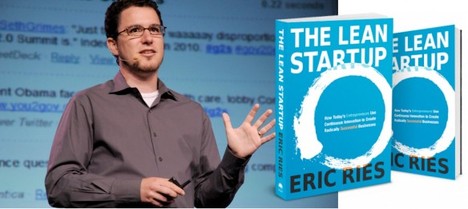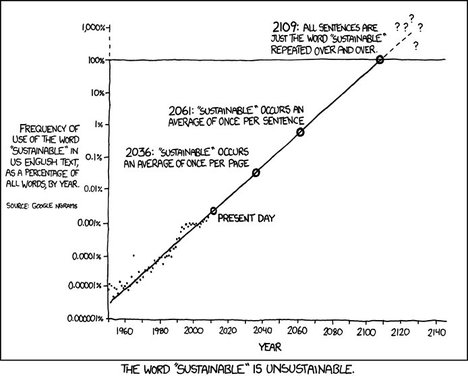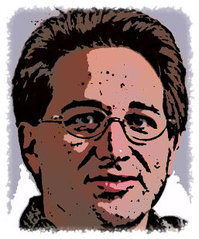 Eric Ries and his book. Source of photo: http://nemonics.files.wordpress.com/2011/11/eric-ries-lean-startup.jpg?w=584&h=262
Eric Ries and his book. Source of photo: http://nemonics.files.wordpress.com/2011/11/eric-ries-lean-startup.jpg?w=584&h=262
(p. D3) “What’s different in the Valley is that we’ve found a quasi-scientific method for reinventing businesses and industries, not just products,” said Randy Komisar, a partner in a leading venture capital firm, Kleiner Perkins Caufield & Byers, and a lecturer on entrepreneurship at Stanford University. “The approach is much more systematic than it was several years ago.”
The newer model for starting businesses relies on hypothesis, experiment and testing in the marketplace, from the day a company is founded. That is a sharp break with the traditional approach of drawing up a business plan, setting financial targets, building a finished product and then rolling out the business and hoping to succeed. It was time-consuming and costly.
The preferred formula today is often called the “lean start-up.” Its foremost proponents include Eric Ries, an engineer, entrepreneur and author who coined the term and is now an entrepreneur in residence at the Harvard Business School, and Steven Blank, a serial entrepreneur, author and lecturer at Stanford.
The approach emphasizes quickly developing “minimum viable products,” low-cost versions that are shown to customers for reaction, and then improved. Flexibility is the other hallmark. Test business models and ideas, and ruthlessly cull failures and move on to Plan B, Plan C, Plan D and so on — “pivoting,” as the process is known.
For the full story, see:
STEVE LOHR. “Looking Backward to Put New Technologies in Focus.” The New York Times (Tues., December 6, 2011): D3 & D4.
(Note: the online version of the story is dated December 5, 2011.)
Ries’ recent book is:
Ries, Eric. The Lean Startup: How Today’s Entrepreneurs Use Continuous Innovation to Create Radically Successful Businesses. New York: Crown Business, 2011.
Blank’s books are:
Blank, Steve. Not All Those Who Wander Are Lost. CafePress.com, 2010.
Blank, Steven Gary. The Four Steps to the Epiphany: Successful Strategies for Products That Win. 2nd ed: CafePress.com, 2005.
Blank, Steve, and Bob Dorf. The Startup Owner’s Manual: The Step-by-Step Guide for Building a Great Company. K & S Ranch, 2012.
Another relevant book is:
Maurya, Ash. Running Lean: Iterate from Plan A to a Plan That Works. 2nd ed. Sebastopol, CA: O’Reilly Media, 2012.






